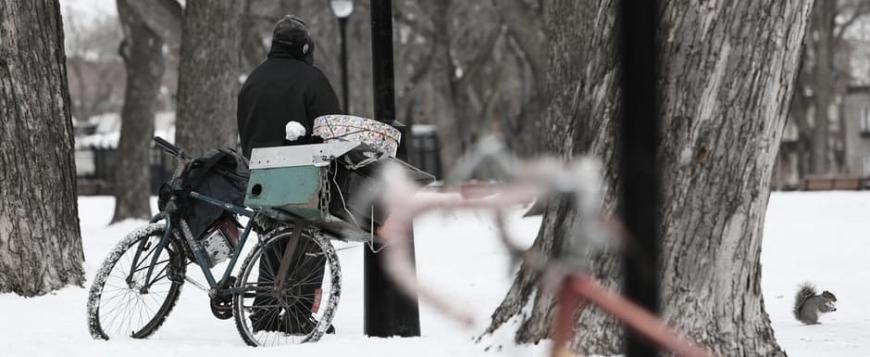Colorado to Battle Homelessness Using Cannabis Taxes
Gov. John Hickenlooper is proposing “aggressive” new efforts to address homelessness in Colorado.
The governor’s budget request for fiscal year 2017-2018 asks lawmakers to put $12.3 million in annual marijuana tax revenues toward building new housing units for people who experience chronic and episodic homelessness. His plan also includes another $6 million a year for housing for low-income residents and others with behavioral health needs.
The approach is a first for the administration and the fresh focus comes as new federal figures show Colorado’s homeless rate is increasing at one of the higher rates in the nation.
“I’m doubling down,” Hickenlooper said.
The Democrat credits his desire to reduce homelessness as one of the reasons he ran for Denver mayor in 2003, and he expresses a personal connection to the issue from his days as a business owner downtown.
In opening the Wynkoop brew pub in the late 1980s in what was then a rough part of town, Hickenlooper hired homeless workers at times. “I just became really acquainted with the entire issue of chronic homelessness and a number of the individuals,” he said in a recent interview. “So I was concerned about it.”
Soon after being elected mayor in 2003, Hickenlooper created a commission to study the issue and embraced a 10-year plan to end homelessness. The effort expired in 2015 without meeting its ultimate goal and he is returning to the issue now in his second and final term as governor.
“We went through the worst recession in 100 years,” he said. “We got thrown backwards; does that mean we quit?”
The use of marijuana tax collections is a new strategy and comes as officials increasingly link homelessness rates to the state’s legal marijuana trade.
The taxes on medical and recreational marijuana — which totaled $134 million in the first nine months of 2016 — are currently earmarked for law enforcement, health care and substance abuse prevention and treatment programs.
Diverting them to housing programs would require a change in law — a move that may generate opposition in the forthcoming legislative session, in which lawmakers will craft their own spending plan.
Henry Sobanet, the governor’s budget director, said the administration’s interpretation of how the marijuana tax money can be spent is “the direct and most reasonable indirect issues related to the newly legalized regime.”
“Taking what used to be an illegal activity, now that’s it’s legal and taxable, (and) using it to address another social issue was an opportunity that we felt important to take advantage of — and one that would make some sense to the public,” said Sobanet, who labeled the new effort “aggressive.”
The governor’s proposal would put $16.3 million in marijuana tax revenues and another $2 million in general tax collections a year toward three new programs to address affordable housing and homeless issues. The package includes:
$12.3 million to build 1,200 new permanent housing units for chronically homeless individuals and 300 additional units for those with periodic homelessness in the first five years.
$4 million to acquire or construct 354 housing units paired with behavioral health services.
$2 million in incentives to add 250 affordable housing units for senior citizens and those facing rising prices from gentrification.
The Colorado Coalition for the Homeless lauded the creation of a dedicated source of money for these programs.
“I think it shows a real strong state commitment for trying to find solutions to what is becoming a state problem,”
said Cathy Alderman, vice president for public policy at the Colorado Coalition for the Homeless.
Colorado saw a 6 percent increase in homelessness in 2016, which ranks as the seventh-largest in the nation, putting the population at more than 10,000, according to the U.S. Department of Housing and Urban Development. The state’s supply of year-round beds for homeless is less than 7,000, the figures showed.
In recent years, the state put more money toward rental assistance programs, increasing the total to $23.7 million in 2015 from $14 million three years prior. Another $2 million in the same time period went to construct permanent supportive housing for homeless individuals, according to the state Department of Local Affairs, which manages the programs. These programs are ongoing.
Pat Coyle, the DOLA deputy director, said the state takes a housing-first approach to provide “that security and stability of a place for someone to live” while they receive treatment for mental illness, rather than trying to treat their condition while still homeless.
The strategy is one that Hickenlooper pushed as Denver mayor and continues in his latest effort.
“My argument — and it’s the same argument — is we spend more than twice as much … perpetuating lives of misery by letting people live under bridges than we would getting them into housing and giving them wrap-around services — by which I mean, job training at the top of the list, counseling for addictions and medications for mental health,”
Hickenlooper said.
Article originally posted by denverpost.com






















